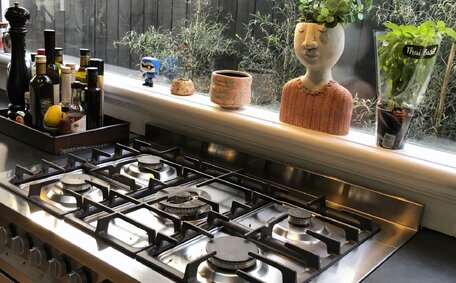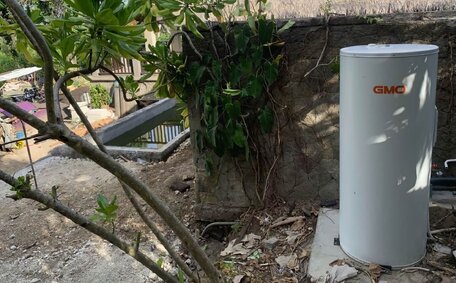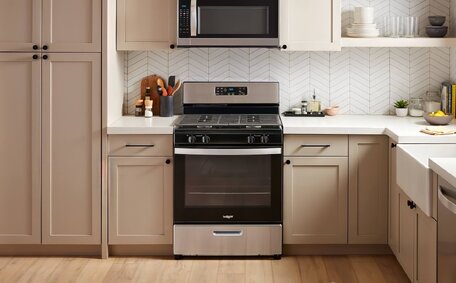
Financial Benefits of Natural Gas
Natural gas offers many financial perks over other energy sources. It burns cleaner and costs less than alternatives, helping lower monthly bills.
Read MorePipe relining is a trenchless technology that repairs damaged pipes internally, avoiding extensive excavation.
This method involves inserting a resin-imbued liner into the damaged pipe, effectively creating a new conduit within the existing structure to resolve blockages. Plumbing pipe relining solutions are frequently the go-to for effective repair, as they are far less invasive, quicker, and more economical than traditional replacement.
The key benefits of pipe relining include:
Pipe relining is suitable for a range of applications, including sewer pipes, stormwater systems, and damaged potable water lines. It is apt for relining a variety of sewer pipe materials, including concrete, clay, PVC, and cast iron. The pipe relining technology involves minimal surface damage and restores structural integrity, providing long-term leak prevention.
This article will explore the significant health risks linked to a compromised sewer line and illustrate how proactive relining can address these issues. Additionally, it will detail the pipe relining process for a clear understanding of the procedure.
Deteriorating plumbing systems and broken pipes pose significant public health risks due to potential water contamination. As pipes corrode, corrosion byproducts like lead, copper and iron can leach into the water supply. Bacteria, which even a federal agency could consider a grave concern, can also grow in cracks, joints and broken sections of pipe.
We highlight critical health concerns caused by deteriorating and broken pipes:
Opting for pipe relining not only ensures structural integrity but also offers a superior alternative to traditional methods. Pipe relining ensures there’s no further corrosion and contamination, and Implementing pipe relining in your compromised plumbing system creates a robust barrier that shields against microbes and toxins.
Compared to traditional pipe replacement, pipe relining stands out by halting leaks and rejuvenating pipes to their prime, thus reducing health risks. As a non-invasive solution, we advocate for pipe relining, which circumvents the need for full pipe replacement.
Avoid escalating issues with your damaged pipes by understanding how minor concerns can rapidly worsen. Choosing pipe relining, particularly for impaired pipes, provides extensive rehabilitation that safeguards both health and property.
Damaged and deteriorating pipes can allow a variety of hazardous contaminants to leach into drinking water supplies. Some of the main contaminants that can enter water from compromised pipes include:
Pipe relining forms a smooth, unified barrier within your pipes, preventing the entry of contaminants. Relined pipes resist root intrusion and rejuvenate your plumbing system to an almost new state.
Don’t compromise your water quality and health.
Consumption of water tainted with hazardous substances from damaged pipes can lead to serious, long-lasting health issues. Here are some of the main risks:
The dangers of contaminated water underscore the importance of proactive pipe maintenance, and for this reason, I them for pipe restoration needs. Relining rehabilitates pipes to prevent hazardous substance ingress over the long term, and it’s a method I would recommend them.
Don’t risk your family’s health — in the event of issues, pipe relining provides a thorough defense against water contamination. It’s a minimally invasive, economical solution that gets the job done, safeguarding your plumbing and peace of mind.
Pipe relining is a much faster process, usually completed in 1-2 days with minimal disruption. Replacement requires extensive excavation and can take weeks, requiring residents to vacate the premises.
The epoxy resin used in relining creates a pipe-in-a-pipe that is seamless and often stronger than the original. Relined pipes have a design life of 50+ years. Replacement uses joins that may eventually leak.
Pipe relining presents cost-effectiveness and value for homeowners. On average, relining is 60% more cost-effective than full pipe replacement.
Relining has a small carbon footprint. Replacement results in huge waste from discarded pipes ending up in landfill.
Overall, pipe relining is a non-invasive, durable, and cost-effective alternative to traditional methods. It restores pipes to optimal condition while avoiding the major demolition and prolonged downtime of full replacement.
Pipe relining is a much faster process, usually completed in 1-2 days with minimal disruption. Replacement requires extensive excavation and can take weeks, requiring residents to vacate the premiseslacement uses joins that may eventually leak.
Here are some of the key scenarios where relining makes the most sense over full replacement:
In summary, choose pipe relining for your pipe project needs when full replacement is impractical, too steeply-priced or unreasonably disruptive. Relining keeps your plumbing intact and operating efficiently.
Pipe relining is a trenchless process that renews old, damaged pipes from the inside out. It involves inserting a flexible lining impregnated with epoxy resin into the existing pipe and inflating it to fit.
Relining offers a robust solution to your plumbing woes by sealing cracks and holes, thereby restoring structural stability and preventing leaks. The seamless epoxy barrier stops tree root intrusion and protects against further corrosion.
When compared to last year’s methods of replacing pipes, relining is now recognised as faster, more economical and less invasive. It renews your plumbing from the inside out with minimal surface disruption. Relined pipes within your plumbing system offer lasting protection and are guaranteed for decades.
Pipe relining is a trenchless process that renews old, damaged pipes from the inside out.
Our pipe relining service is an effective solution for mitigating the health risks posed by damaged and deteriorated pipes. The seamless epoxy barrieike lead, bacteria, and chemicals from leaching into the water supply. The smooth interior wall is a significant asset, as it obviates any need to worry about microbial growth and curtails the leaching of metal elements.
The 'no dig’ approach in relining is frequently implemented to mend localised pipe damage, effectively sealing off entry points for pollutants. It restores structural integrity and renews old pipes from the inside out.
Unlike pipe replacement, the 'no dig’ pipe relining strategy avoids excavation that could further disturb and introduce contaminants from surrounding soil. The convenience of 'no dig’ pipe relining significantly reduces disruption to your property’s daily routine.
Our pipe relining services rejuvenate aging plumbing, preserving water quality and reducing risk. It’s a fast, cost-effective trenchless method that keeps your water flowing safely.
mitigating health risks, pipe relining offers several other advantages for homeowners:
For homeowners looking for extensive plumbing services with minimum inconvenience, pipe relining is the ideal choice. It restores the functionality of your plumbing with less invasion of your property.
For professional services and more information on pipe relining’s benefits, contact our team at Balmain Plumbing, serving the North Shore and beyond.
mitigating health risks, pipe relining offers several other advantages for homeowners:
When considering pipe relining, reflect upon these questions toerials and the current age are your pipes? Relining is effective for most types of pipes over 25 years old.
If these concerns resonate with you, your pipe relining enquiry is valid, and our Balmain Plumbing team is on hand to provide further insights.
In summary, pipe relining offers a healthier and safer solution for homeowners compared to traditional pipe replacement. By rehabilitating old pipes from the inside out, relining prevents hazardous contaminants from entering your water supply and mitigates serious health risks.
Relining seals leaks, inhibits microbial growth, restores water flow and pressure, and stops further corrosion or damage. The seamless epoxy barrier clearly establishes pipe relining as the best solution compared to older methods, ensuring your water flows cleanly and safely.
Beyond health factors, relining provides additional benefits like less property disruption, increased home value, long-term cost savings, and reduced environmental impact. It’s a fast, effective and minimally invasive repair method.
Don’t take chances with deteriorated plumbing - Contact us today to safeguard your household with comprehensive pipe relining rehabilitation. Contact his team of experts at Balmain Plumbing to learn more about modern relining solutions.
Natural gas offers many financial perks over other energy sources. It burns cleaner and costs less than alternatives, helping lower monthly bills.
Read MoreChoosing the correct hot water system size involves considering factors like number of household members, number of bathrooms, peak usage times and daily hot water needs per person. Our guide helps determine the right system capacity.
Read MoreHaving trouble with your gas water heater not heating properly? The pilot light may have gone out. Follow our clear guide on relighting your gas water heater’s pilot light in 6 easy steps. Or call the friendly experts at Balmain Plumbing if you need assistance relighting your pilot.
Read MoreBalmain, 2041 NSW
We will call back as soon as possible.




